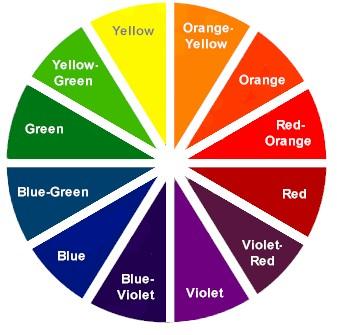Each desires to outfit their new dream home with unique decor that is both elegant and inviting. There is flooring to install, furniture to pick out and arrange, and walls to be painted. However, before any of these tasks can be accomplished, a decision must be made: what is the color scheme?
 |
- Primary Colors: – Those three colors learned at a young age are the foundation of the color wheel – red, blue, and yellow.
- Secondary Colors: – These are the colors that emerge once the Primary colors have been combined – purple, orange, and green.
- Tertiary Colors: – The last spokes of the color wheel are made when each of the Secondaries mixes with their neighboring Primary.
- Cool Colors: – Blues, greens, and purples make up the "cool" side of the color wheel. These colors are passive and recede into the background, often making rooms appear larger. Cool colors are ideal for home offices, bedrooms, and other living spaces that require peace and calm. Greens are especially rejuvenating, so strategically placed houseplants can provide a splash of color while maintaining a room's balance.
- Warm Colors: – Reds, yellows, and oranges make up the other half of the color wheel, invigorating living spaces. These are active colors that appear to move toward you and transform rooms into intimate settings. These colors can be distracting, so it is best to use them in creative spaces like playrooms and kitchens. Using them as accents for home offices can keep workspaces from being dreary while retaining productivity.
- Whites & Neutralizers: – Although not considered part of the color wheel, do not overlook the important place whites and neutrals have in your home decorating. Whites promote an open feeling when used in large quantities. Utilized as accents, whites provide crisp frames that showcase other colors. For the walls, turn to soft, muted whites to prevent eyestrain caused by light reflecting off brilliant whites. Neutralizers are those soft hues of tan and cream that bridge rooms together. Cooperative and not distracting, neutralizers blend with all other colors to keep schemes cohesive.

No comments:
Post a Comment